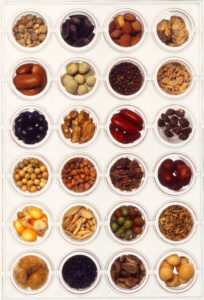Drivers heading south on East Drive or north on Mason Street in Fort Collins may not know that they are passing by the USDA’s National Laboratory for Genetic Resources Preservation.

The laboratory maintains a long-term collection of more than a half million unique samples of seeds, cuttings, and other plant materials as part of the USDA Agricultural Research Service (ARS) National Plant Germplasm System, which was the focus of a new study led by Pat Byrne, a professor in Colorado State University’s Department of Soil and Crop Sciences. Byrne, in collaboration with Gayle Volk of USDA-ARS and other researchers from Cornell University, Iowa State University, the University of Wisconsin and USDA-ARS, who found that the NPGS materials house vital genetic information that offers novel opportunities for plant breeding.
An invaluable resource
“These materials have tremendous potential value for plant breeders and other researchers, but have been a largely untapped resource,” said Byrne. “There are few other laboratories in the United States or across the globe that have so many genetically distinct strains that are so accessible for research.”

According to the USDA-ARS, the NPGS supports agricultural production by acquiring, conserving, evaluating, characterizing, documenting and distributing crop germplasm. Byrne and his colleagues reviewed the status of the NPGS and noted some of the successes resulting from use of the system’s germplasm. In Colorado, for example, resistance to the Russian wheat aphid was identified in a primitive strain of wheat from Turkmenistan and incorporated into several released wheat cultivars.
Recommendations offered
The authors then recommended several steps to enhance the value of the NPGS germplasm, including filling in gaps in the collection, conducting large-scale evaluations of the materials for useful traits and genes, improving data management capabilities, and expanding training and outreach activities. These activities will be most effectively implemented by coordinating efforts among USDA, land-grant universities, the private sector and international partners. Building on the study’s findings and recommendations, CSU and USDA-ARS will host a workshop in Fort Collins in April to develop a strategy for training the next generation of gene bank managers, plant breeders and researchers to effectively curate and utilize plant genetic resources.
“Agriculture faces daunting challenges in providing sufficient food, feed, fiber and fuel for a growing global population with increasing dietary expectations,” said Byrne. “We need to make the most of the plant materials at our disposal to help increase crop yields and productivity without putting additional strains on scarce resources such as land and water.”
The study, “Sustaining the Future of Plant Breeding: The Critical Role of the USDA-ARS National Plant Germplasm System” can be found in the March-April 2018 issue of Crop Science.